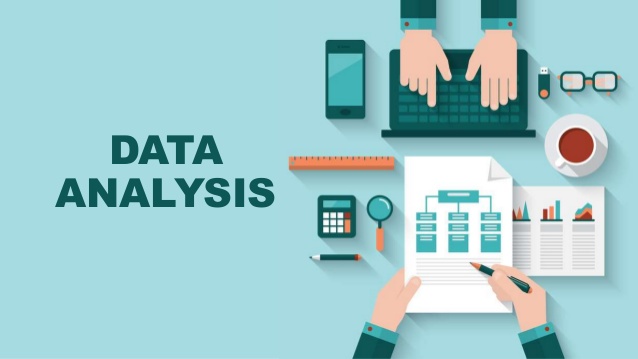
As the world delves ever deeper into the Fourth Industrial Revolution, modern enterprises are forced to evolve their operational practices. With this digital transformation comes an onslaught of information, resulting in massive datasets and the responsibility to analyse this data effectively. When organisations are empowered to see the whole story in their data, a powerful shift occurs, where management can make informed decisions based on real facts derived from their operations, ultimately leading to financial success.
At the Finance Indaba 2017, held at the Sandton Convention Centre, thousands of colleagues, suppliers of technologies, specialists, CFOs and thought leaders gathered to further the finance profession. Simon Kirby - Director of SI Industry Solutions: Financial Services at South Africa Master Qlik Reseller - shared his insights into using analytics in the finance function. With a glimpse into the history of analytics and business intelligence, Kirby detailed the data and finance journey, indicating how things are done differently today.
To remain innovative and relevant, especially in the financial and insurance sectors, a good business intelligence solution must handle data effectively, analyse it accurately and present it visually. The results must be distributed in a way that ensures the impact can be seen across the entire organisation. "The finance department has one of the most challenging jobs within any organisation," confirms Kirby. "They have to collect all of the data for the entire organisation, analyse it, and offer enormous amounts of reporting to the board, senior management, regulators, etc."
To drive insight into the finance area, three essential elements are required. "Firstly, the analytics tool must offer the ability to support the financial process around regulatory reporting. It must also be effective to track day-to-day transactions, making sense of this huge volume of data flowing through the department. In particular, the sales ledger often needs to be broken down, analysed, aggregated and summarised," adds Kirby. "Thirdly, analytics are highly effective in ensuring financial control, considering financial losses (whether deliberate, through fraud, or accidental losses)."
Often financial decisions are made by managers with experience. They sometimes rely on gut feel, which can serve them well - but they often lack real data to make sense of, or substantiate, what they have done or decided. "People really need to make decisions based on data. Although statistical results largely depend on the inputs, how the data is presented, what is included and what is left out, you can't truly make an informed decision and you can't truly run a business today without really understanding data."
Kirby believes financial planning is a fascinating part of the finance function and a critical role of any finance department. Successful planning tells the organisation where it is, where it needs to get to in the future, and how it is going to get there. "That process of budgeting, planning and forecasting is vital for any company. Once targets are set, it is essential to measure progress, and when necessary, re-adjust. It's not possible to do this without data."
Similarly, in the insurance sector, data and analytics offer dozens (if not hundreds) of ways to benefit the industry. For example, if we look at an insurance company, there are three key areas; underwriting, pricing, and claims. "Underwriters within an insurance company play a very important role in terms of determining the terms and conditions of the policies that they provide, but this requires insight into customer needs. The innovation in this field has created a data driven conversation, rather than merely contacting customers during the annual renewal period," advises Kirby. "Actuaries work very closely with employees in both underwriting and claims to determine pricing. To do so, precise claims analytics are crucial. From a claims point of view, the need to be able to understand the claims paid, the types of claims received and the information required to eradicate claims fraud cannot be overstated."
While informing sound decision making processes, data analytics is an excellent tool to bring inefficiencies to light. From finance to call centres, data analytics drives in-depth insight into how teams are functioning, where performance is lacking, and why. Whether it's millions of calls coming in daily, or hundreds of financial reconciliations required monthly, data offers the opportunity to discern deep inefficiencies. Kirby asserts that the ability to use data to get things right in the first place and to identify and solve inefficiencies are great examples of using data to improve a business.
Through the effective use of analytics visualisations, dashboards and applications, users can find real insight in their data. "To derive value, users must be able to connect to, store and change data with a powerful but simple to use Extract Transform and Load (ETL) tool. Users shouldn't need to know how to write complex SQL in order to associate and profile their data," adds Kirby. "The best analytics platforms at the forefront of data innovation can deal with incomplete data sets without breaking, while at the same time offering the power to ask questions and receive intuitive answers. The ability to see the data in a visual way, and ask for insights through a natural process is the key to driving truly insightful access to datasets."
Kirby concludes with the core benefits of effective data analytics. In any organisation, the three significant questions are; can we make more money? Can we save money? And, where is that "holy wow" eureka moment that delivers the solution to a problem that has plagued the business' operations. "The key to any kind of analytics or data analysis is the ability to use data to drive these benefits. Using a tool that offers these advantages in a visual way is incredibly powerful - and sometimes it blows your mind."
- IT News Africa
















Comments